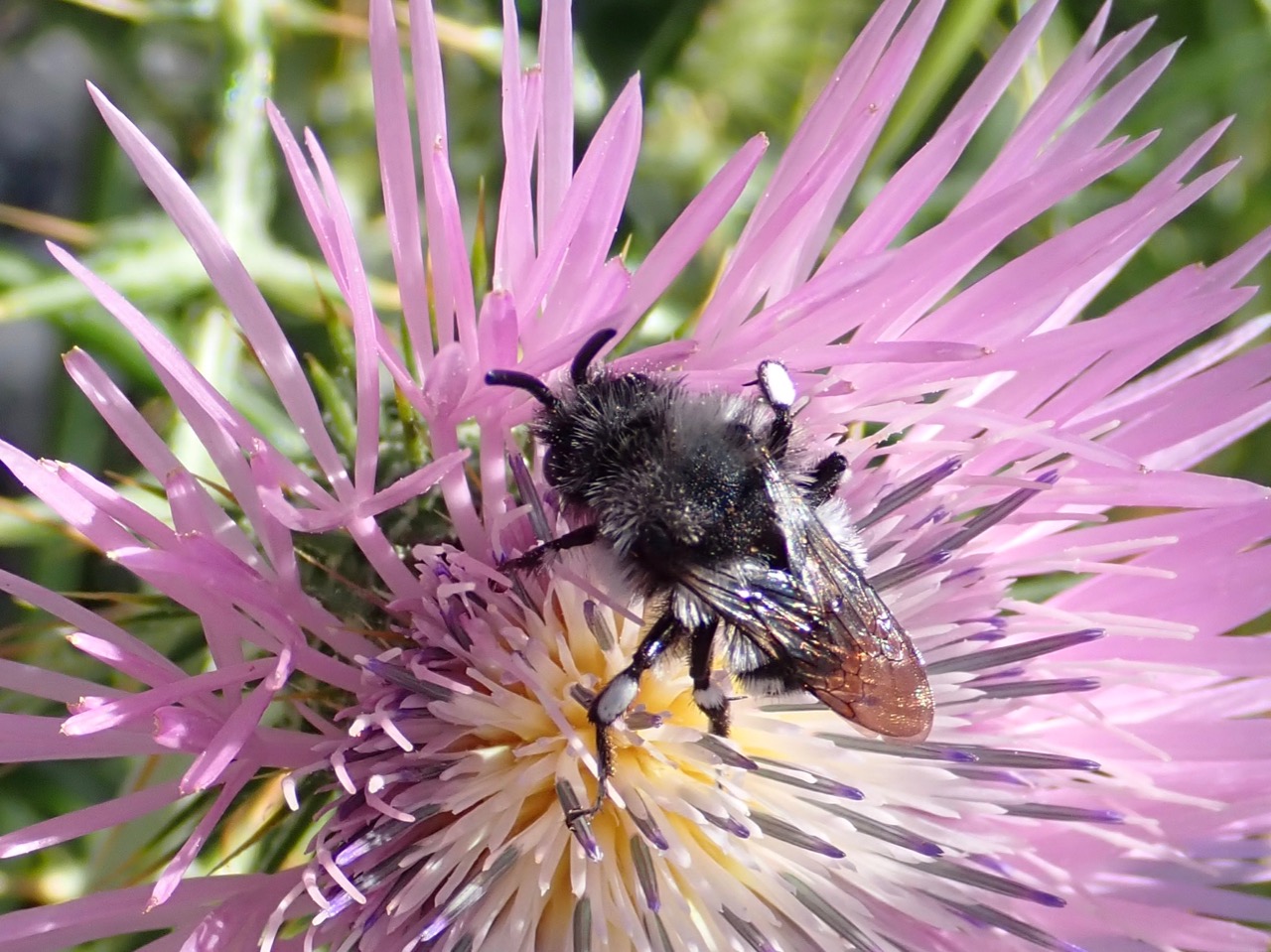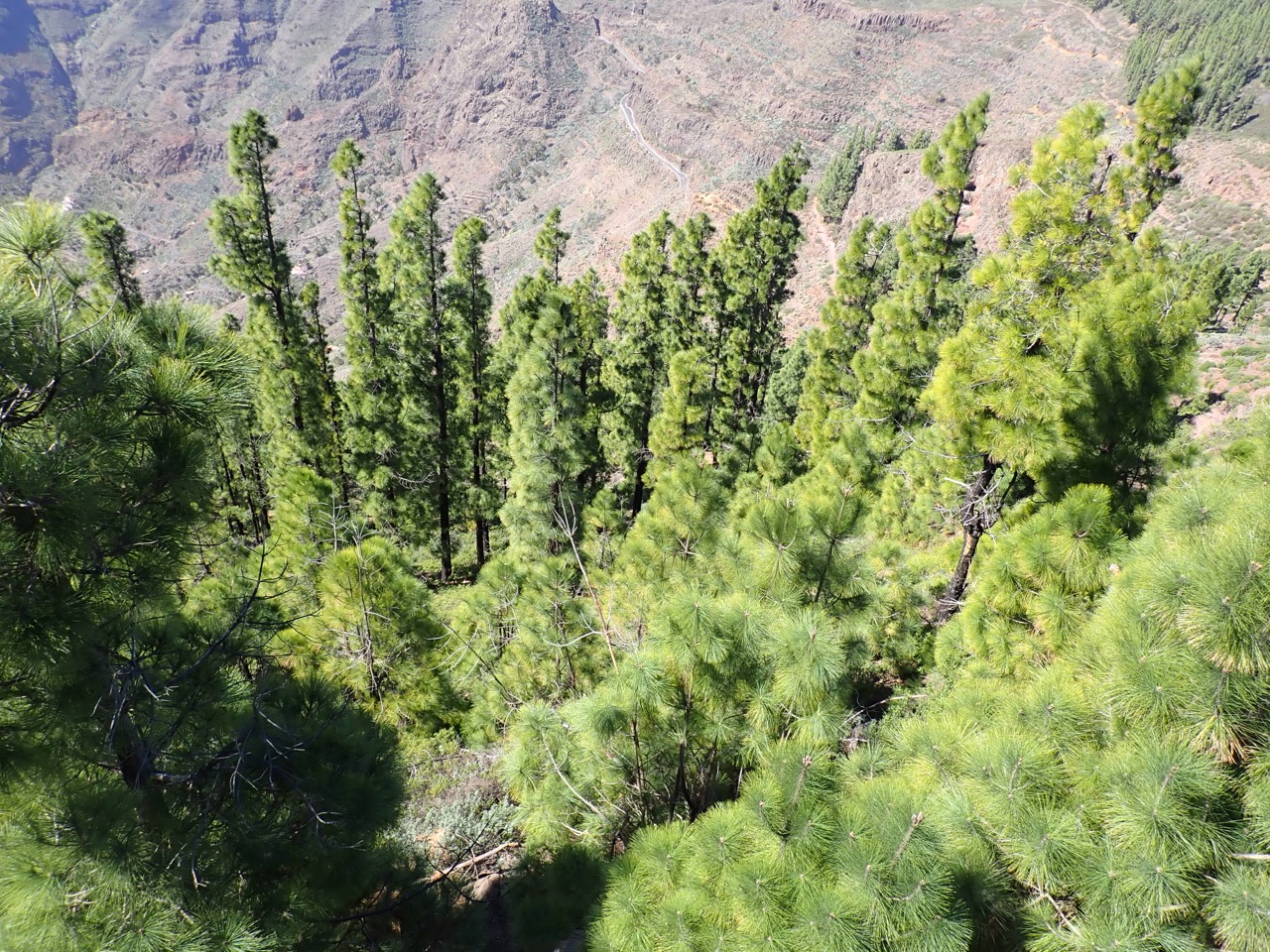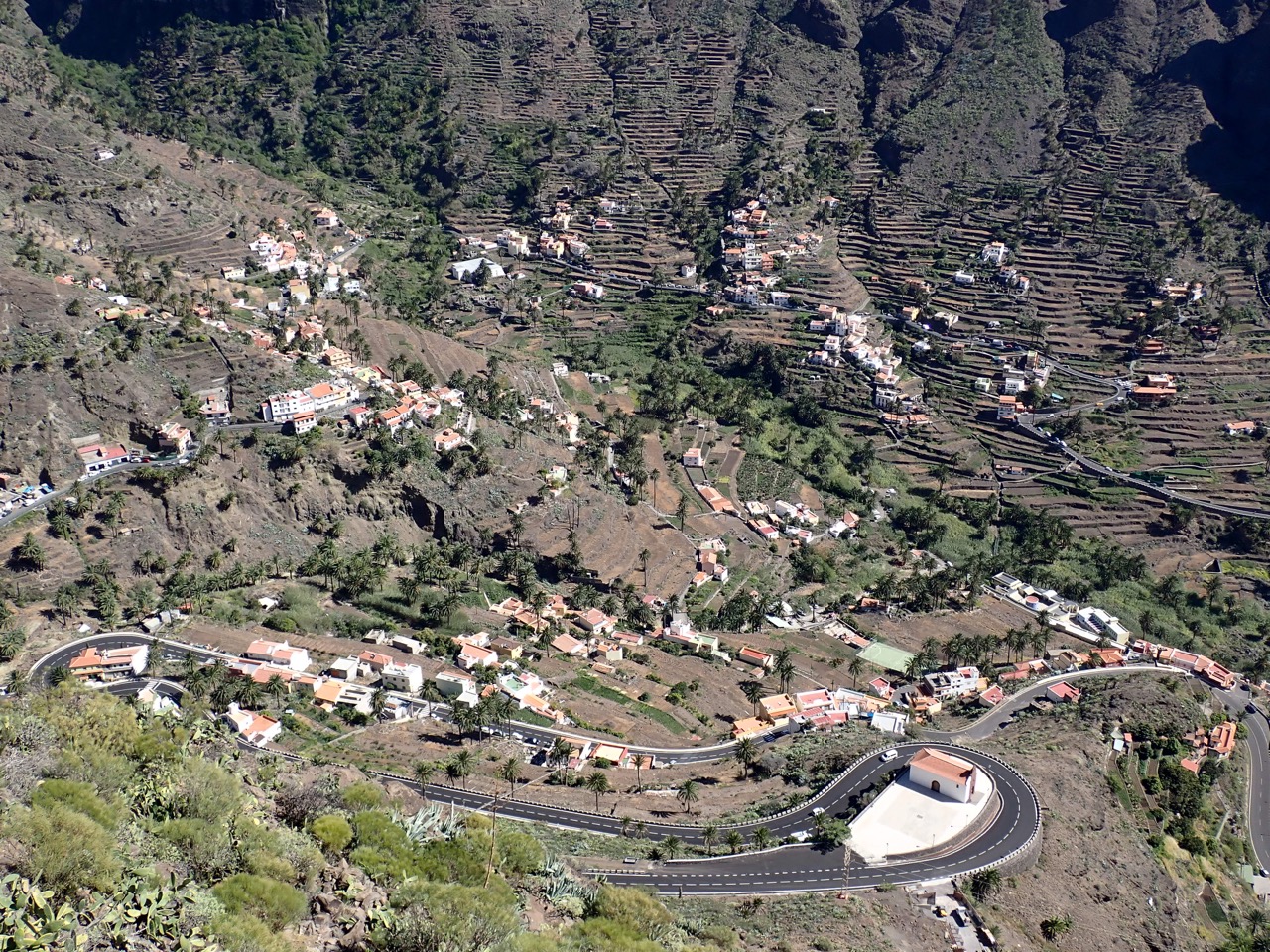On Thursday we rented a car (I made mistake in previous post, the bus trip was on Wednesday). We again got a nice car, bigger and better than what we asked for, but for the price of the smallest one. Great service by Cicar as always. We drove through the hills...
...to one of the iconic rocks there, called Roque de Agando. We were lucky it was not in clouds, previous day as we drove by on bus it was not even visible. Noticed the nice flowers in foreground?
There were some more around the parking lot.
At the base of the rock there were some pine trees and a lovely green valley.We drove to the next valley and then towards South.
While island is very green, its volcanic origin is still evident on many places.
At the end of the valley on the coast there is Playa Santiago, with small sleepy town with it's own spectacular rock.
I wouldn't mind having something like this in my backyard. Unless it was crumbly and one would need to wear a helmet while sitting in the garden.
We walked through the town, and had some arepas and coffee and fresh orange juice in one of the restaurants. Arepas are Venezuelan fried cakes made with corn flour, and then cut up and filled with different fillings - we had one with tuna and another with braised beef. It was very good and not fatty at all. Of course we also found some pretty flowers in the town.And this is how Playa Santiago looks from above, there is also small harbour on the West side of the bay, where the ferry docks. Bay looked quite calm, it could be suitable for anchoring in settled weather.
Next we drove further West to the village of Alajero through another valley. The shape of Gomera is like one big hill with several valleys leading down from the middle of the island to the coast with ridges between them. Only on few places coast is flat and you can drive from one valley to the next along it, mostly it is necessary to drive up to almost middle of the island and then down into next valley. We stopped at several places and I always found some flowers with bees. We also saw some bee hives on the slopes, and of course decided to get some Gomera honey.
At one of the lookouts (miradors) we saw lots of nice things. I was seeing these plants also on other islands, also growing on the rocks, but only here they were also blooming.
There were several almond trees in bloom as well, and they also already carried fruit.
Above the mirador there was a small church with nice picnic place.
I liked these yellow flowers, and only later on my computer discovered a small yellow spider in the blossom.
The Thistle (osat) was the bee's favourite. There were plenty of usual bees...
...and also this pretty one, with thick antennae, white specks on the legs and white stripes on her hind part.
We drove back to the middle of the island and discovered some more plants we haven't seen before.
Then we stopped at Mirador de Igualero. There is a small church there and a monument to "Whistlers". People of Gomera were using a whistling language a lot to communicate from one ridge to another, as the terrain was so rugged. Whistling language is not only the part of Unesco cultural heritage now, but is also taught in schools on Gomera.
There were also some pretty views from the mirador. Towards the West there was an old volcanic mountain and some lovely pine forests...
...that survived the great fire in 2012. It you look close you can see how black the trunks still are and that the green branches are growing directly from them, as previous branches obviously burned away.
Next we drove towards Valle Gran Rey, and first stopped at Mirador de el Palmarejo, which was designed by Cesar Manrique, the artist that made such a difference in architecture on Lanzarote.
This is Valle Gran Rey, with winding road and terraces where they used to grow bananas...
...and the coast and touristy village at the end of the valley.
We didn't drive there, we didn't feel like we need to see another beach and there was so much more to see on that day.We stopped at the Mirador de Abrante. There is a restaurant there that has a part made of glass and is hanging above the cliffs...
...over the town of Agulo. It was already late in the afternoon, and the light was fading, but the ground was really that red.
We had a nice Gofio mousse and Polverito de Uruguay (both desserts) in the restaurant and then also explored the plants around it a bit. I've again found a pretty bee, the same kind as I've seen during the day, on the plant that we've seen at Roque de Agando. Bee was in such a hurry to work through as many blooms as possible that I couldn't make a better photo of it.
Then we drove down through the hills to town of Agulo. While it's nice, it is not so very pretty. But we got a jar of Gomera honey in local shop.
In town I found a giant Poinsettia (božična zvezda), that was actually a tree. I know it as a pot plant that is bought mostly at Christmas.
Then we drove back to the marina, day was almost over and we were tired. On Friday we made a bit of shopping and prepared the boat for a long sailing on next day. In the evening we had a big BBQ and went to bed early, we wanted to sail off at 7.30 at the latest on next morning.
On Saturday morning everything went as planned, after the breakfast we got out of the port right behind Fred Olsen ferry at 7.30. While it was a long sail, the weather was perfect, just like forecast, and sailing nice and fast. Even the waves were not too big and annoying, once we were out of the channel between La Gomera and Tenerife. Captain was happy that none of the sailboats, that were sailing behind us, could overtake us. Just before reaching La Palma big flock of Atlantic dolphins came to play around our boat. We reached Santa Cruz marina before 5 in the afternoon and then the new adventure begun. But boy, we were so not ready for anything that awaited us.






























No comments:
Post a Comment